

![]() 'Incident Commander
Pro - Version 8'
'Incident Commander
Pro - Version 8' 
-
Sound Sweep -
Effective Large-Area Ground Search Procedure
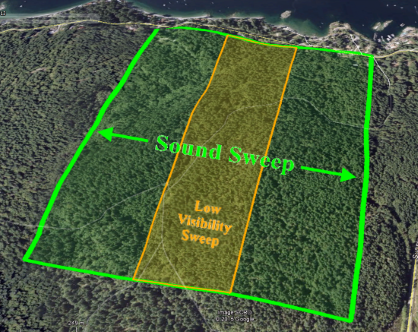 |
|
|
Introduction
 'Incident
Commander Pro's Sound Sweep Routine is a highly effective search method for
finding a responsive subject, permitting up to a 3 times larger search area than visual
ground searches
with the same manpower. It is also a practical night-search and low visibility search technique.
'Incident
Commander Pro's Sound Sweep Routine is a highly effective search method for
finding a responsive subject, permitting up to a 3 times larger search area than visual
ground searches
with the same manpower. It is also a practical night-search and low visibility search technique.
Sound sweeps utilize sound attraction, in combination with wide searcher spacing, to
quickly search large areas.
The Sound Sweep therefore is an important tool for SAR responders, both for large area searching and for initial trail searches.
Considerations
The Sound Sweep technique is based upon the
assumption that a missing person will
respond with sound, usually by shouting, if he/she hears a loud sound generated by the
searchers. This means that the Sound
Sweep should be conducted as soon as possible
after notification,
while
the subject is still capable of an audible (shouted) response.
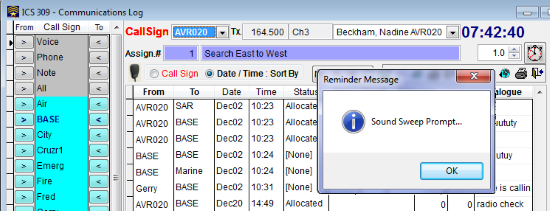 |
|
'Incident Commander Pro' - Sound Sweep Generator |
![]() Setup:
Setup:
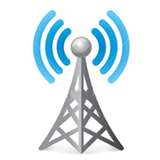 A base radio station, prompted by
'Incident
Commander Pro', is
used to synchronize searchers whistle-blasts.
A base radio station, prompted by
'Incident
Commander Pro', is
used to synchronize searchers whistle-blasts.
![]() To conduct the Sound Sweep all searchers must have a whistle, radio,
map and compass.
To conduct the Sound Sweep all searchers must have a whistle, radio,
map and compass.
![]() The searchers move to their starting points
along the baseline, mark this location, and then follow a direction of travel
(bearing) through the search area.
The searchers move to their starting points
along the baseline, mark this location, and then follow a direction of travel
(bearing) through the search area.
![]() The searcher spacing depends on the selected probability of detection (POD) and
terrain type, chosen from 'Incident Commander Pro's Sound Sweep
Data.
The searcher spacing depends on the selected probability of detection (POD) and
terrain type, chosen from 'Incident Commander Pro's Sound Sweep
Data.
![]() 'Incident Commander
Pro's integrated Sound Sweep procedure generates
synchronized sound prompts, for a wide range of pre-defined terrain types.
'Incident Commander
Pro's integrated Sound Sweep procedure generates
synchronized sound prompts, for a wide range of pre-defined terrain types.
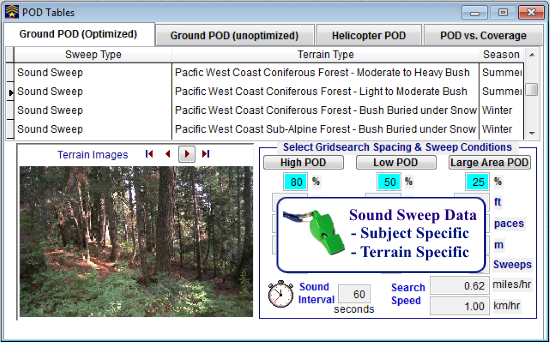 |
|
'Incident Commander Pro' - Sound Sweep Data |
 Sound Sweep Procedure:
Sound Sweep Procedure: ![]() Areas
Areas
![]() The 'Incident Commander Pro' sound
prompts are used by the base radio to synchronize the searchers whistle
blasts, typically once every one to two minutes, depending on the Sound Sweep
Data.
The 'Incident Commander Pro' sound
prompts are used by the base radio to synchronize the searchers whistle
blasts, typically once every one to two minutes, depending on the Sound Sweep
Data.
![]() At each sound prompt the base radio broadcasts
“4,3,2,1, BLAST”
At each sound prompt the base radio broadcasts
“4,3,2,1, BLAST”
![]() The searchers then stop, cover their ears (to
preserve hearing),
simultaneously blow their whistles on BLAST, uncover their ears and listen
carefully, during 5 seconds of radio silence, for an audible response (shout) from the subject.
The searchers then stop, cover their ears (to
preserve hearing),
simultaneously blow their whistles on BLAST, uncover their ears and listen
carefully, during 5 seconds of radio silence, for an audible response (shout) from the subject.
![]() The searchers should remain
still and quiet as they listen for a response, as any other noise may drown out
a faint response sound from the
subject.
The searchers should remain
still and quiet as they listen for a response, as any other noise may drown out
a faint response sound from the
subject.
![]() If
no audible response is heard the searchers then continue along their bearing until the
next timed sound prompt is heard.
If
no audible response is heard the searchers then continue along their bearing until the
next timed sound prompt is heard.
![]() This
sound sweep procedure is repeated until the entire area has been searched.
This
sound sweep procedure is repeated until the entire area has been searched.
Note: The 1-2 minute sound
prompt interval delivers a 100% probability that searchers should hear (detect) an audible
response. If this interval is doubled (not recommended) then the Sound
Sweep may only deliver a lower 85% Probability of Detection.
 Sound Sweep Procedure:
Sound Sweep Procedure:  Trails
Trails
Search teams travelling along trails
have their whistle blasts co-ordinated by the sound
prompt in much the same way as searchers travelling
through a search area. The synchronized whistle blasts along the trail increase
both the probability of detection and the corridor-width, often well beyond the limits of visibility. Only one radio per
trail team is required.
![]() The recommended trail sound prompt interval is typically 30 seconds
to one minute, depending on the Sound Sweep Data.
The recommended trail sound prompt interval is typically 30 seconds
to one minute, depending on the Sound Sweep Data.
Doubling the interval between these frequent whistle
blasts is not recommended as it will reduce the search corridor-width and the
100% probability of detection down to 85%.
![]() Sound Sweep Procedure: Roads
Sound Sweep Procedure: Roads
Vehicles equipped with VHF radios may also perform sound sweeps.
![]() The convoy of vehicles are stopped, each 1 km apart, and simultaneously sound their
horns on hearing the sound prompt.
The convoy of vehicles are stopped, each 1 km apart, and simultaneously sound their
horns on hearing the sound prompt.
![]() The drivers then listen for a response (shout),
then drive 0.1 km up the road, stop and wait for the next sound prompt to
sound their horns.
The drivers then listen for a response (shout),
then drive 0.1 km up the road, stop and wait for the next sound prompt to
sound their horns.
![]() The drivers then listen for a response before
driving the vehicle another 0.1 km.
The drivers then listen for a response before
driving the vehicle another 0.1 km.
![]() These horn/listen/drive steps are repeated until each
vehicle has driven 1 km, at which time the entire convoy moves up to a new section of road and repeats the
steps.
These horn/listen/drive steps are repeated until each
vehicle has driven 1 km, at which time the entire convoy moves up to a new section of road and repeats the
steps.
Sound Sweep Comments:
As the Sound Sweep procedure relies heavily on communications unnecessary radio
chatter
should be kept to a minimum, particularly during the sound prompt
and the following
five seconds of radio silence. While normal radio communications between these
prompts is acceptable no chatter should be
permitted during the prompts and the following five seconds of radio silence.
Copyright 2016 Martin Colwell. SAR Technology Inc.
For more information please contact:
![]() SAR
Technology Inc.
SAR
Technology Inc.
 Phone:
(604) 921-2488
Phone:
(604) 921-2488  Fax
(604) 921-2484
Fax
(604) 921-2484 ![]() sartechnology@telus.net
sartechnology@telus.net
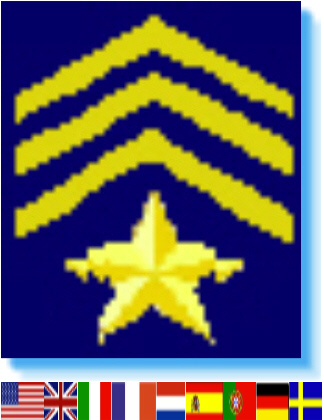 |
SAR Technology Inc. | 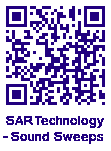 |
View / Save / Share |